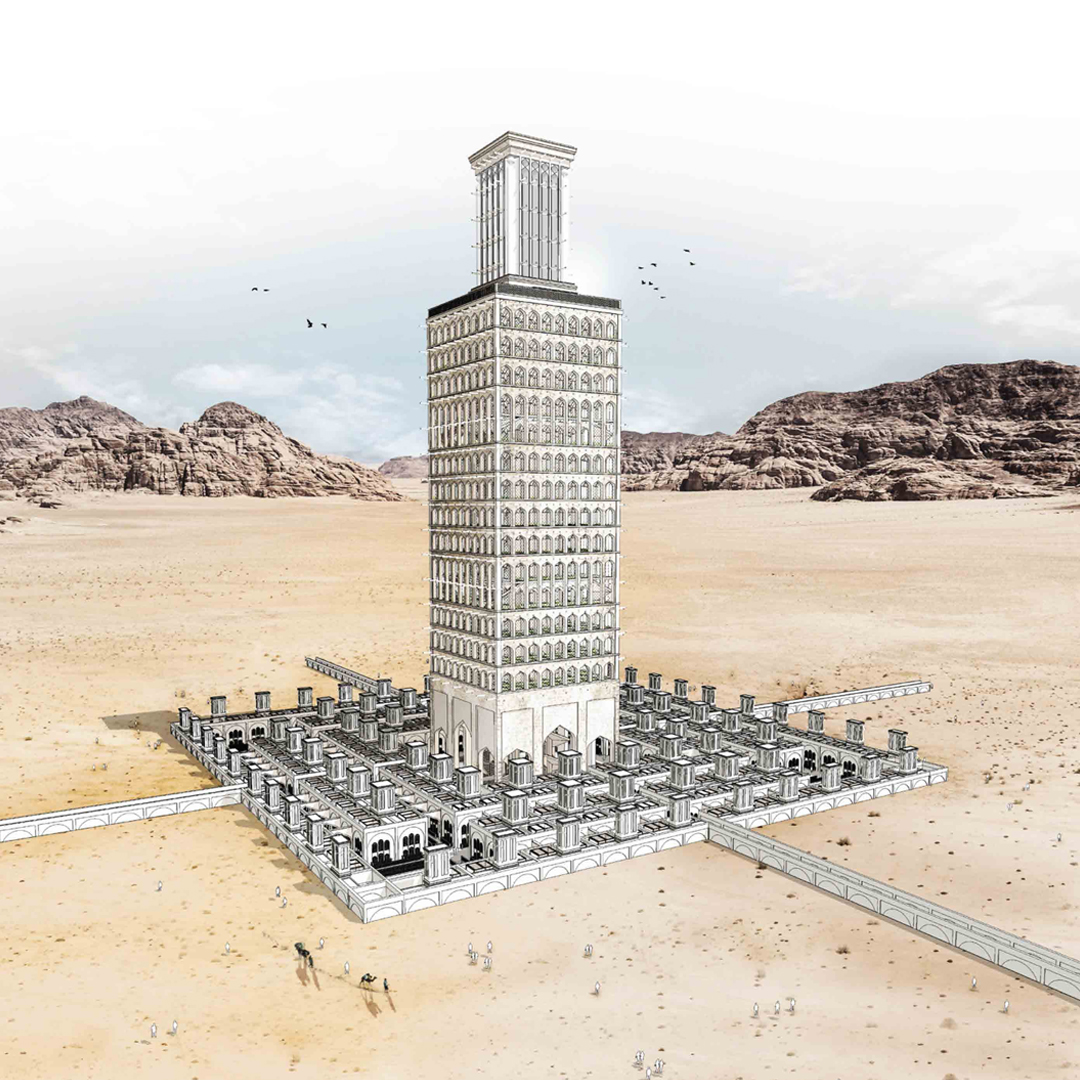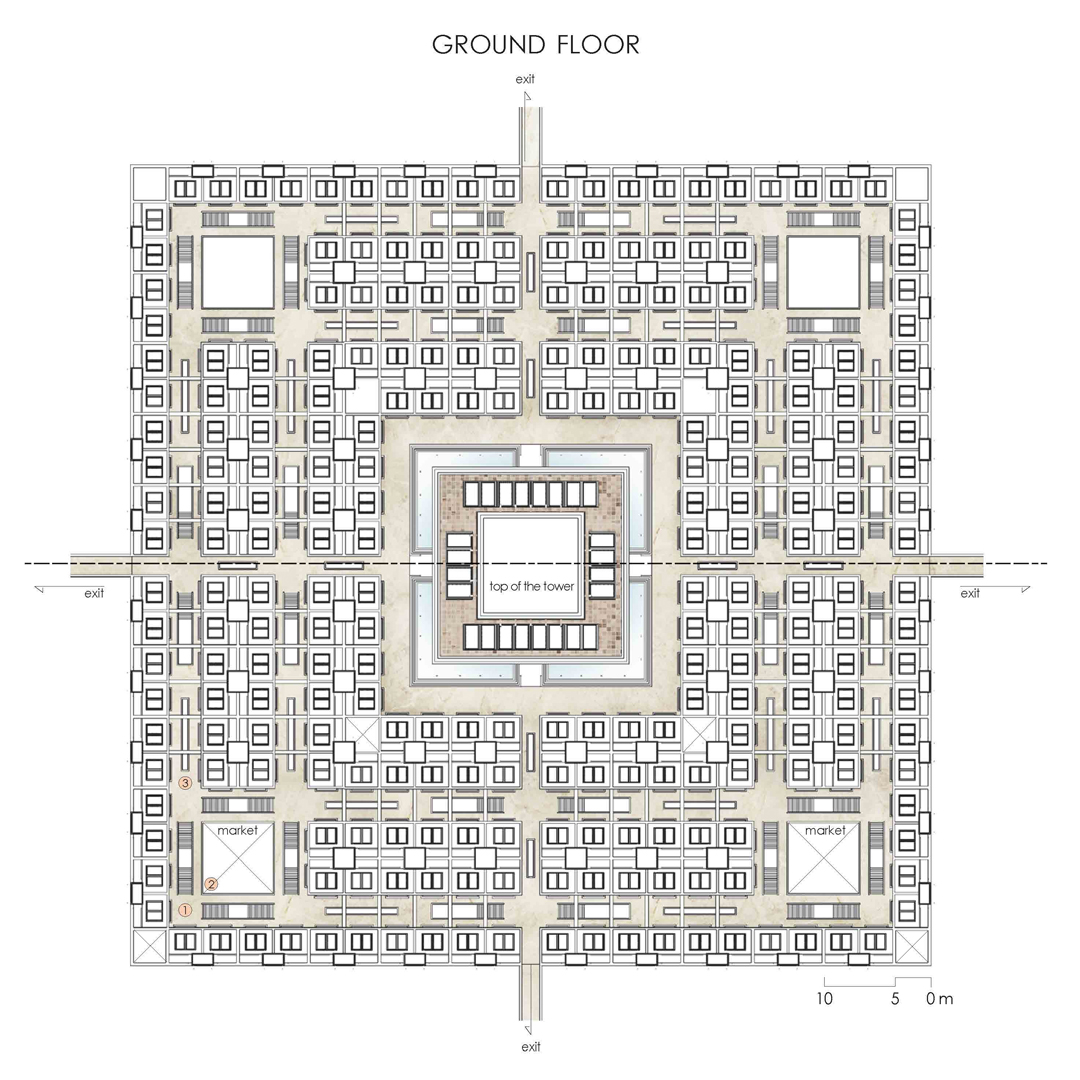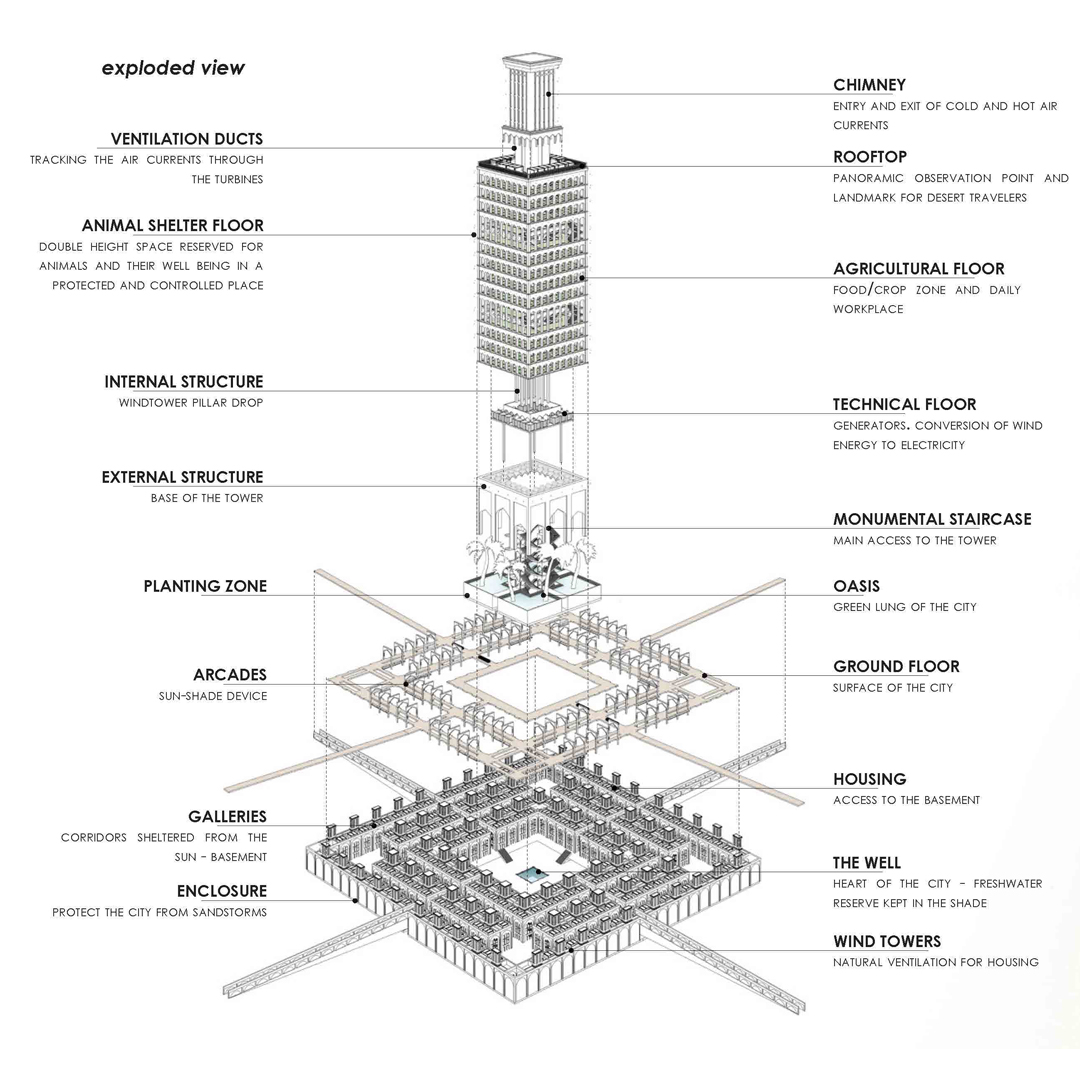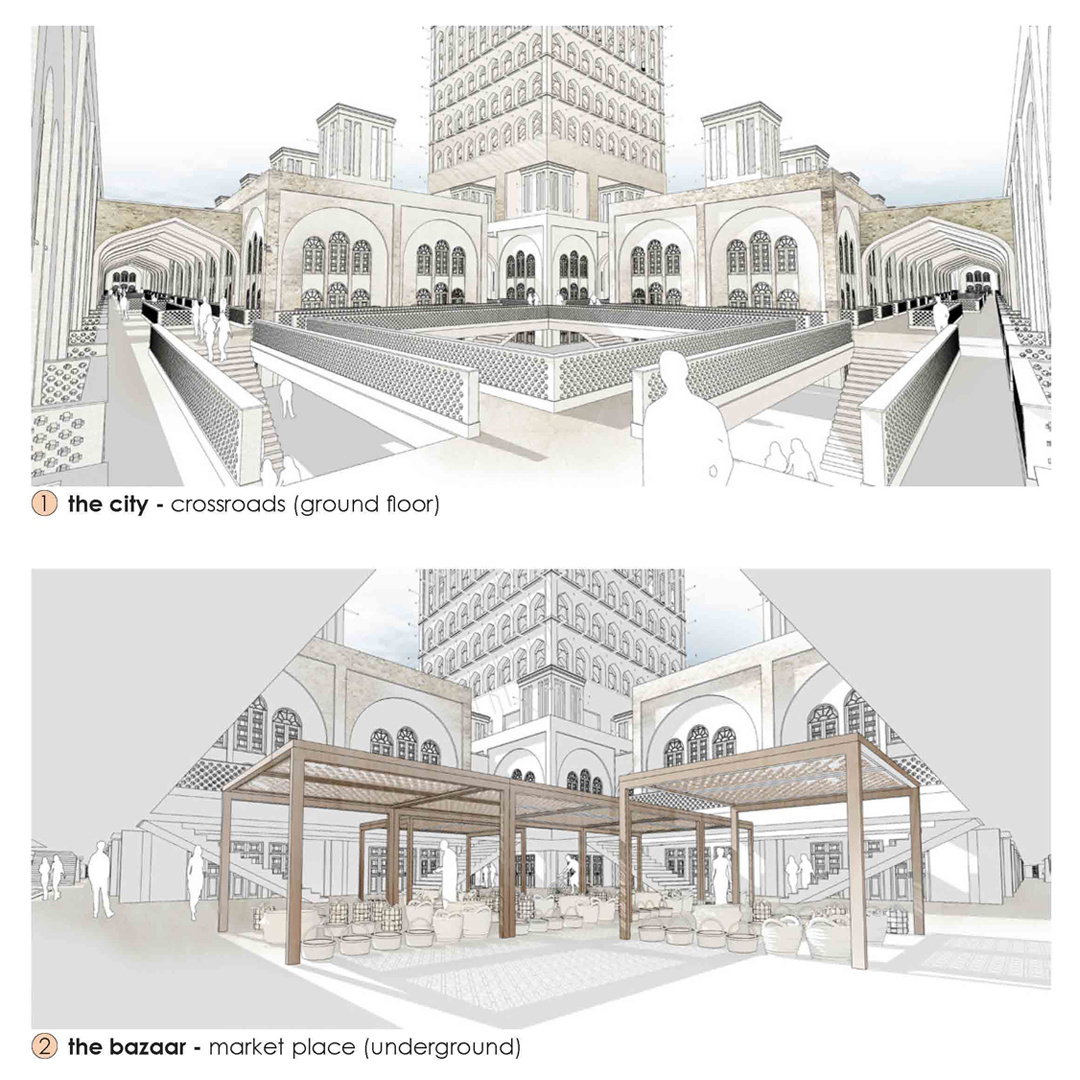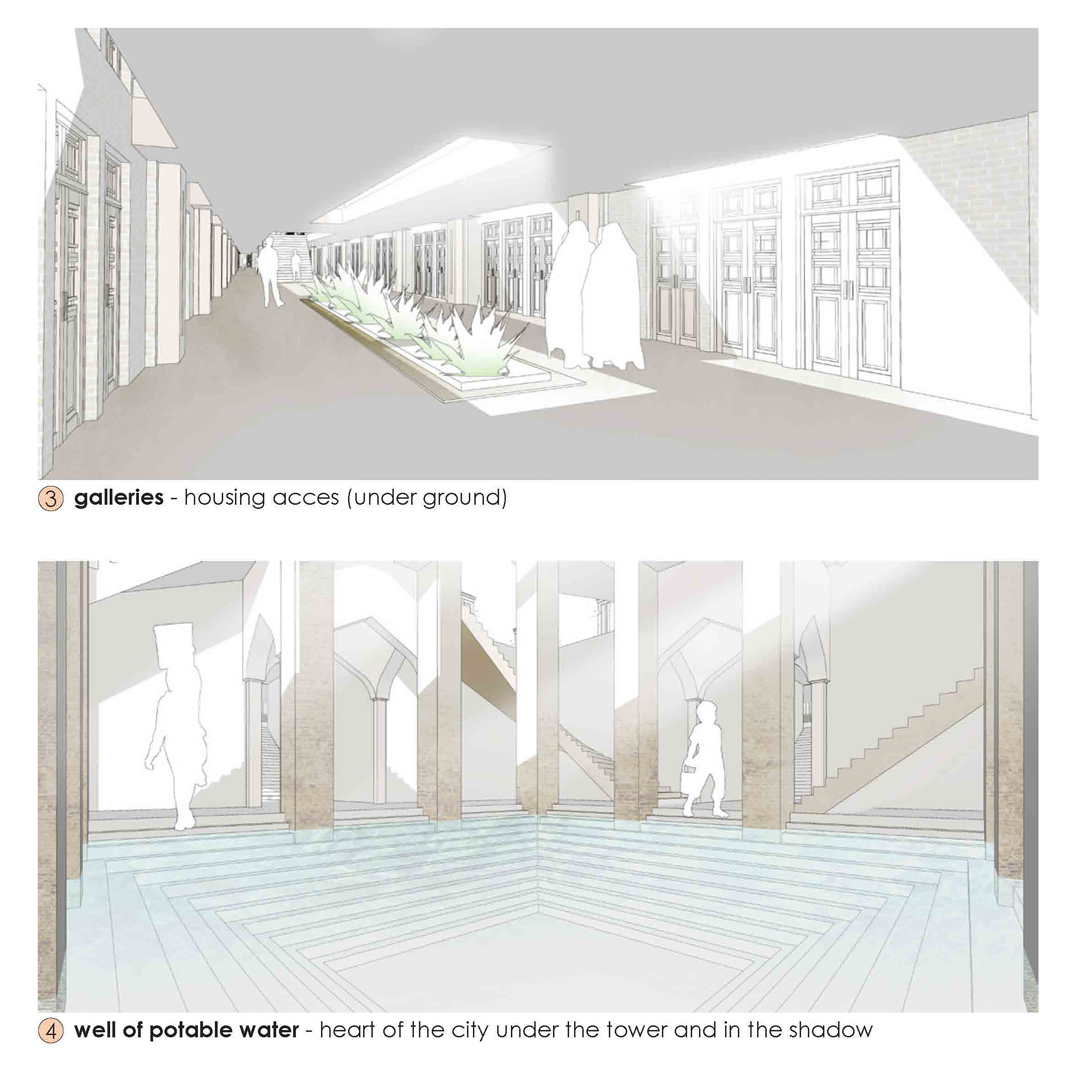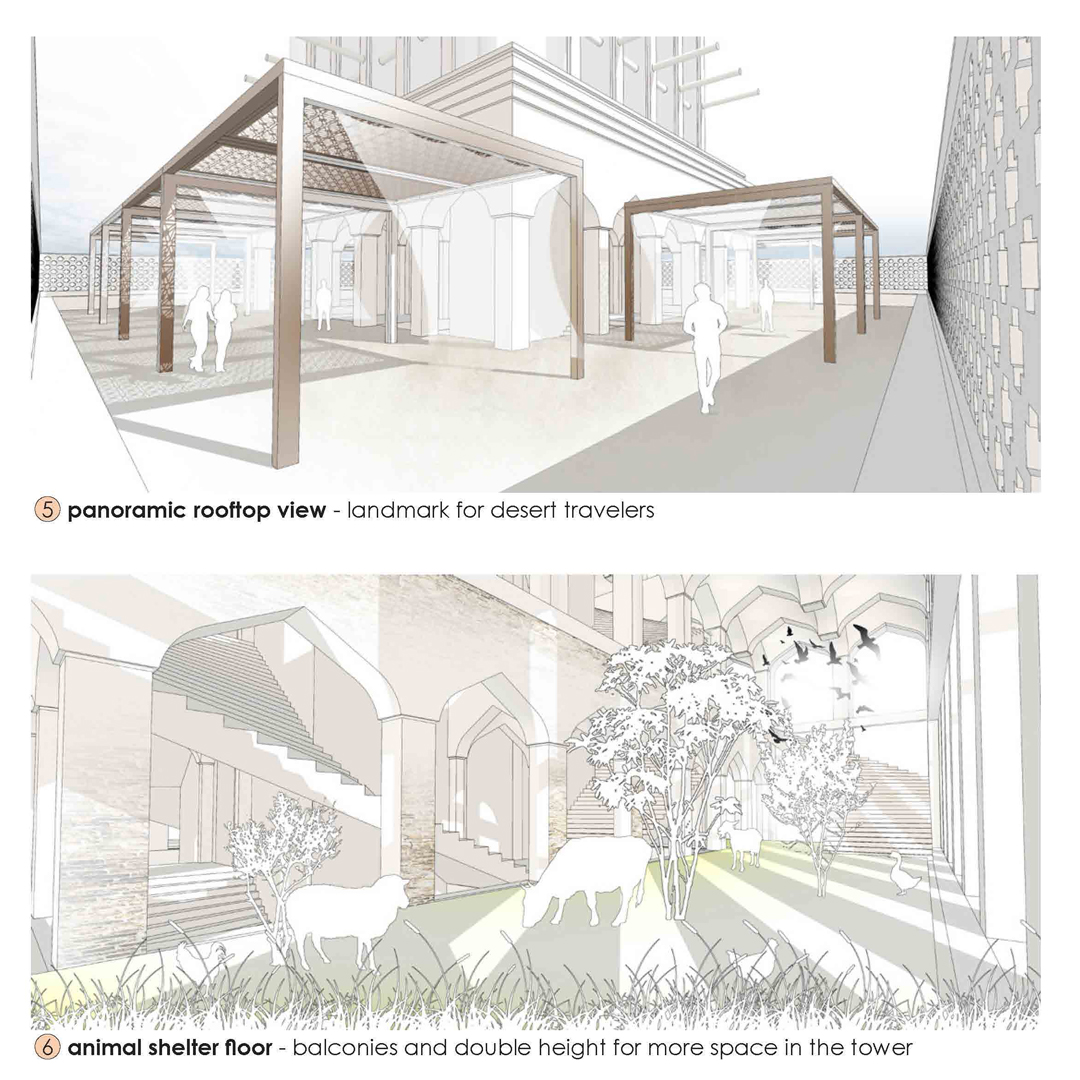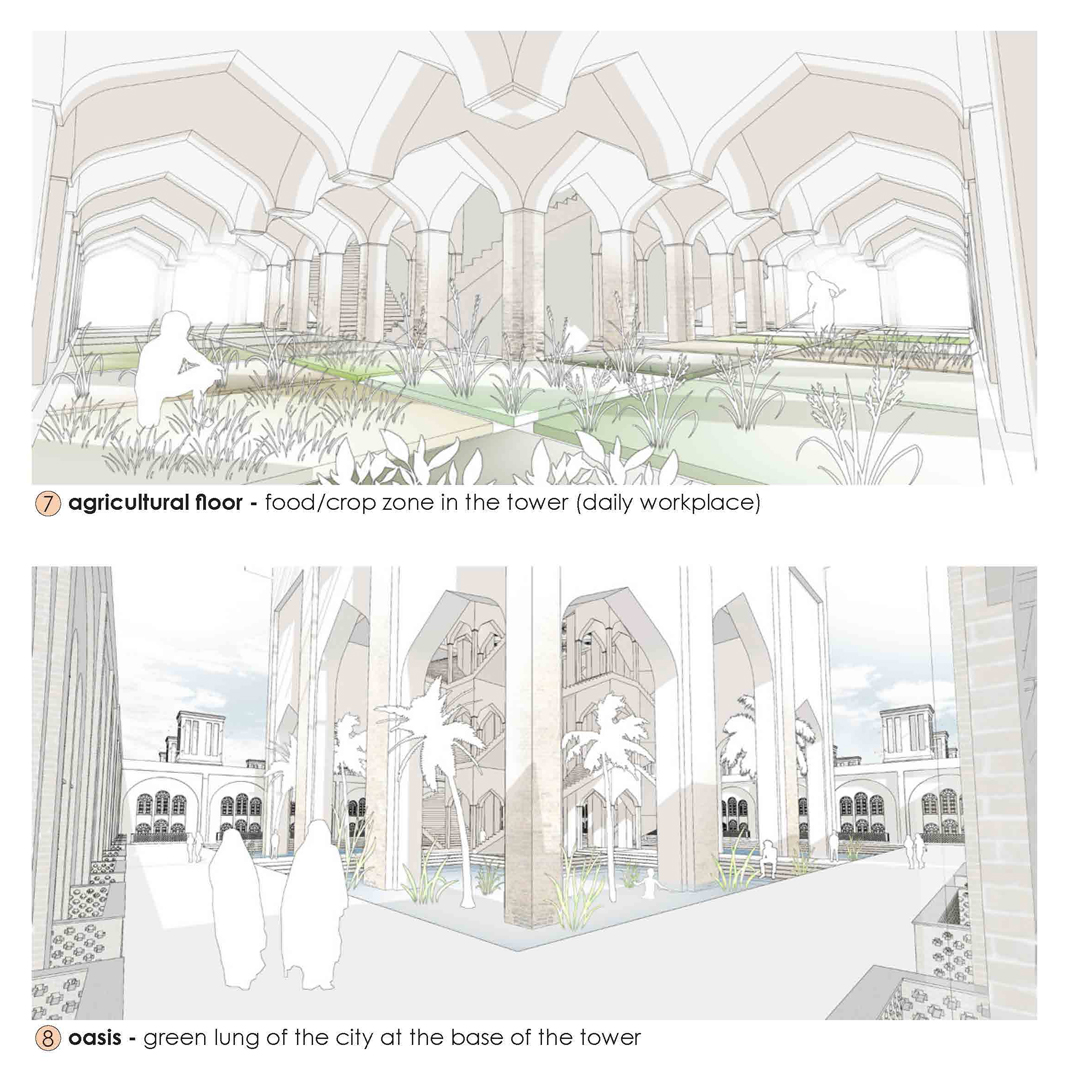Adam Fernandez
In Persian literal translation: bâd « wind »+gir « catch » is a traditional element of Persian architecture used from centuries to create natural ventilation and to refresh inside the buildings
These wind towers are vertical ducts that look like large chimneys that allow them to capture and direct the winds towards the interior of the buildings. We can see them in significant numbers in the desert area of the center of the country.
The interior of the tower is vertically separated in several ducts to allow the circulation of the descending air (which brings freshness) and the ascending air (expelling hot air) currents thanks to the differential atmospheric pressures created. The concept is simple: reuse this traditional process by integrating turbines to generate electricity and converting this tower into a wind turbine. The higher the tower, the easier it is to capture the air flows (5 km / h minimum) and the stronger the pressure.
By adding floors around the structural core to cultivate land sheltered from the sun and thanks to a water-sensing façade, Badgir proposes to make possible the development of an autarky city in the middle of the desert in an inhospitable environment for humans. The population will be limited according to the resources generated by the tower. The city composed of narrow streets, public squares, underground galleries, a bazaar, an oasis and a well will provide the best conditions for living even at very high temperatures.
Badgir will be a city based on respect for ecology, self-sufficient and based on a closed loop system (zero waste). The objective of the project is to demonstrate that it is possible to live without destroying our planet (even in the worst conditions) by combining technology and ancestral architecture.
Author: Adam Fernandez.
Location: Desierto de sal, Iran.
Year: 2019
Competition: eVolo.
Prize: Honorable mention.
